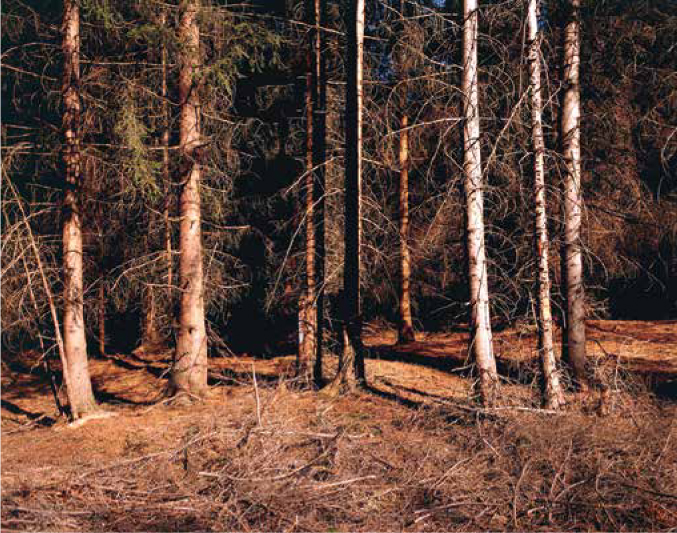21.7 Air pollution is responsible for myriad health and environmental problems.
The World Health Organization (WHO) estimates that more than 3 million people die prematurely each year as a result of exposure to air pollution. Respiratory ailments are the biggest problem because particulates from soot and smog damage respiratory tissue and increase susceptibility to infection. In addition, as Nadeau’s research has shown, asthma rates are higher in people who breathe polluted air—and children are particularly sensitive because they breathe in more air for their size than adults do, and because developing tissue is more vulnerable.
More than 3 million people die prematurely each year as a result of exposure to air pollution.
Delfino’s team of researchers followed up their first study with a second in 2007 that included 53 students with asthma (aged 9–18) with air monitors strapped to their backs. The students also had to breathe into detectors that recorded how much air they were able to blow out from their lungs at once—a measure of lung function. The results suggested that high levels of particulate pollution actually decrease lung function.
Lungs are particularly vulnerable to these small particulates because they get so much exposure (we breathe all the time) and the tissue itself is delicate. Irritants like particles, dust, and pollen can cause the lungs to produce excess mucus in an attempt to trap and expel the irritant. The lining of the airways can become inflamed and swell; in people with asthma, the irritation may trigger muscle contractions which close off the airway completely. Particles smaller than 2.5 µm can actually penetrate cells of the lungs or enter the bloodstream, where they are delivered to other cells of the body. If these particles come from the combustion of fossil fuels or other industrial sources, they may contain toxic substances, leading to problems associated with toxic exposure.
Since the cardiovascular system depends on the respiratory system to provide oxygen for the body, anything that impairs the lungs also harms the cardiovascular system, which might explain the fact that people living in polluted areas also have higher rates of heart attacks and strokes. Cancer rates are higher in people exposed to air pollution, too—exposure to secondhand smoke and radon are the leading environmental causes of lung cancer, and exposure to smog and vehicle emissions is linked to increased risk for lung and breast cancer.
383
Again, researchers have found that pollution causes babies to be born prematurely and with low birth weight. In addition, air pollution increases the risk that a pregnant woman will suffer from preeclampsia, a form of pregnancy-related hypertension. “We have learned that PAHs end up in the placenta and fetus,” explains Beate Ritz, an epidemiologist at the University of California, Los Angeles, School of Public Health.
But humans aren’t the only creatures suffering the ill effects of air pollution. Many animals suffer the same respiratory distress as humans—all lung tissue is very vulnerable to air pollution. Invertebrates as a group, especially aquatic ones, seem to be more directly impacted by air pollution (toxic effects or reproductive declines) than are vertebrates. But aquatic vertebrates like fish and amphibians are certainly feeling severe impacts. Declines in North Atlantic salmon populations have been linked to air pollution–induced water acidity. The higher acidity causes aluminum to build up in water—aluminum is toxic to fish, especially juvenile salmon.
Plant tissues are also vulnerable to pollutants like smog and ozone, as they cause direct damage to sensitive cell membranes. Exposure can damage a leaf’s ability to photosynthesize, preventing healthy growth and compromising its survival. Lichens are particularly vulnerable to air pollution such as nitrogen emissions, and their decline is seen as a warning of the potential for damage to forests and crops. Together with changes in soil chemistry—which can hinder plant growth—pollution damage to plant crops will ultimately cause global crop yields to fall: estimates of crop yields predict decreases for soybean, wheat, and maize ranging from 4% to 26% by 2030, amounting to dollar losses in the billions.
384


Finally, pollution damages buildings and monuments. Acid deposition literally eats away at limestone and marble structures; it can etch glass and damage steel and concrete, causing billions of dollars of damage per year. Smog, SO4, and ground-level ozone pollution also lower visibility by creating haze, a concern for areas that depend on tourism. On hazy days, for instance, it can be impossible to see across the Grand Canyon.